COMET’s Education and Training for the Worldwide Meteorological Satellite User Community: Meeting Evolving Needs with Innovative Instruction
Abstract
1. Introduction
1.1. History and Support
1.2. Evolving Needs and Challenges
1.3. Focus Moving Forward
2. Instructional Methods and Best Practices
2.1. Design Methods and Process
2.2. Designing for Learner Practice Opportunities and Retention
2.3. Learning Resources
2.3.1. Lessons
2.3.2. Distance Learning Courses
3. Outcomes
3.1. Users and Reach
3.2. Impact
3.3. Assessing Learner Performance
4. Summary
Author Contributions
Funding
Acknowledgments
Conflicts of Interest
Abbreviations
| COMET | Originally stood for Cooperative Program for Operational Meteorology, Education, and Training; since 2010 referred to simply as COMET |
| COSMIC | Constellation Observing System for Meteorology, Ionosphere & Climate |
| EUMETSAT | European Organisation for the Exploitation of Meteorological Satellites |
| GCOM-W | Global Change Observation Mission for Water |
| GEO | Geosynchronous/Geostationary Equatorial Orbit |
| GOES | US Geostationary Operational Environmental Satellite |
| IDSS | Impact-based Decision Support Services |
| JPSS | US Joint Polar Satellite System |
| LEO | Low Earth Orbit |
| Metop | European Meteorological operational polar-orbiting satellite |
| MSG | European Meteosat Second Generation geostationary satellite |
| MTG | European Meteosat Third Generation geostationary satellite |
| NASA | US National Aeronautics and Space Administration |
| NESDIS | US National Environmental Satellite, Data, and Information Service |
| NOAA | US National Oceanic and Atmospheric Administration |
| NWP | Numerical Weather Prediction |
| NWS | US National Weather Service |
| POES | US Polar Operational Environmental Satellite |
| SatFC-G | NWS Satellite Foundational Course for GOES-R |
| SatFC-J | NWS Satellite Foundational Course for JPSS |
| UCAR | University Corporation for Atmospheric Research |
| VLab | WMO Virtual Laboratory for Training and Education in Satellite Meteorology |
| WMO | World Meteorological Organization |
References
- Johnson, V.; Jeffries, R.; Byrd, G.; Schreiber-Abshire, W.; Page, E.; Muller, B.; Alberta, T. Celebrating COMET’s 25 years of providing innovative education and training. Bull. Amer. Meteor. Soc. 2015, 96, 2183–2194. [Google Scholar] [CrossRef]
- Spangler, T.; Johnson, V.; Alberty, R.; Heckman, B.; Spayd, L.; Jacks, E. COMET®: An education and training program in mesoscale meteorology. Bull. Am. Meteor. Soc. 1994, 75, 1250–1259. [Google Scholar] [CrossRef][Green Version]
- Spangler, T. The COMET experience. World Meteorol. Organ. Bull. 2007, 56, 107–111. [Google Scholar]
- World Meteorological Organization. Status of Human Resources in National Meteorological and Hydrological Services (ETR-21); World Meteorological Organization: Geneva, Switzerland, 2017. [Google Scholar]
- World Meteorological Organization. Guidelines of Satellite Skills and Knowledge for Operational Meteorologists (SP-12); World Meteorological Organization: Geneva, Switzerland, 2018. [Google Scholar]
- Knowles, M. Andragogy in Action; Jossey-Bass: San Francisco, CA, USA, 1984. [Google Scholar]
- Alessi, S.; Trollip, S. Multimedia for Learning: Methods and Development, 3rd ed.; Pearson: Boston, MA, USA, 2001. [Google Scholar]
- Branch, R. Instructional Design: The ADDIE Approach, 1st ed.; Springer: New York, NY, USA, 2010. [Google Scholar]
- Munzenmaier, C. Bloom’s Taxonomy: What’s Old is New Again; The eLearning Guild: Santa Rosa, CA, USA, 2013; Available online: http://onlineteachered.mit.edu/edc-pakistan/files/best-practices/session-2/Pre-Session-Munzenmaier-Rubin-2013.pdf (accessed on 14 April 2019).
- Allen, M. CCAF and Interactive Instruction, Successive Approximation and SAM. In Michael Allen’s Guide to e-Learning, 2nd ed.; John Wiley and Sons, Inc.: Hoboken, NJ, USA, 2016. [Google Scholar]
- Johnson, L.; Adams Becker, S.; Cummins, M.; Estrada, V.; Freeman, A.; Hall, C. The NMC Horizon Report: 2016 Higher Education Edition; The New Media Consortium: Austin, TX, USA, 2016; Available online: https://www.nmc.org/publication/nmc-horizon-report-2016-higher-education-edition/ (accessed on 14 April 2019).
- Hogle, P. Mobile Reinforcement Crushes the Forgetting Curve; Learning Solutions, Focuszonemedia, Inc.: Santa Rosa, CA, USA, 2018; Available online: https://learningsolutionsmag.com/articles/2435/mobile-reinforcement-crushes-the-forgetting-curve (accessed on 15 April 2019).
- Ogren, J. (Chief Learning Officer, NOAA’s US National Weather Service). Personal Communication, April 2019.
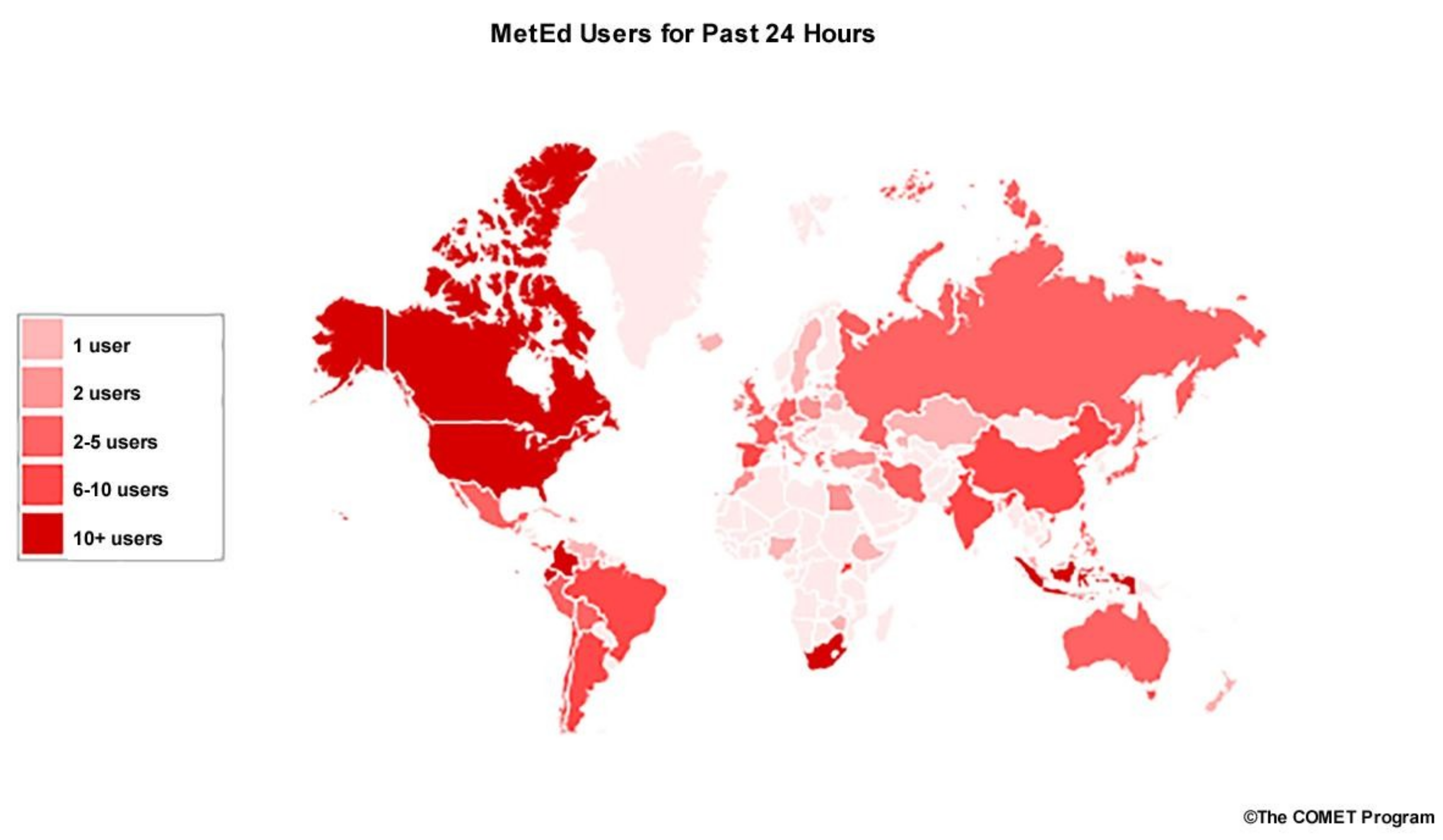
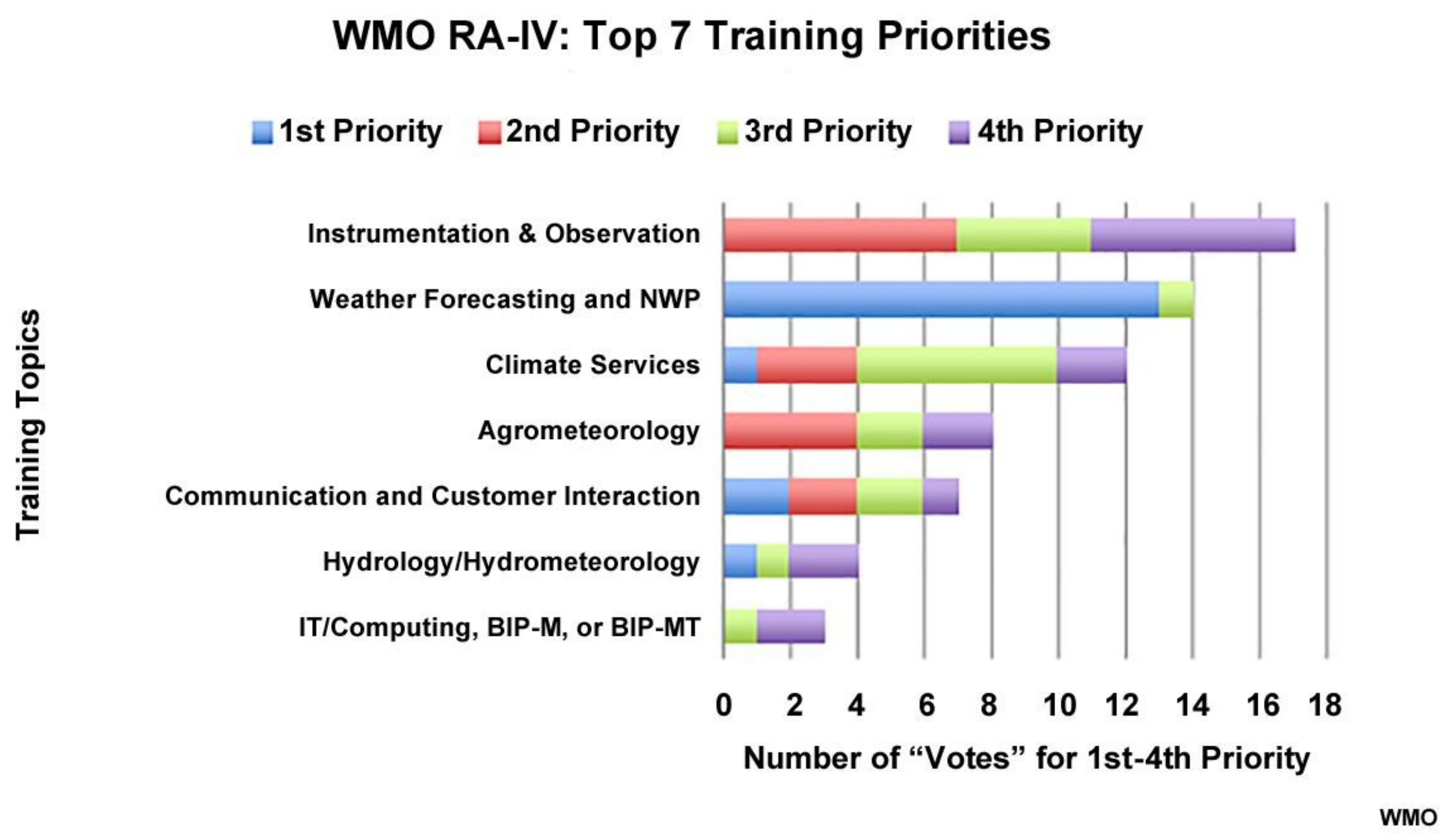
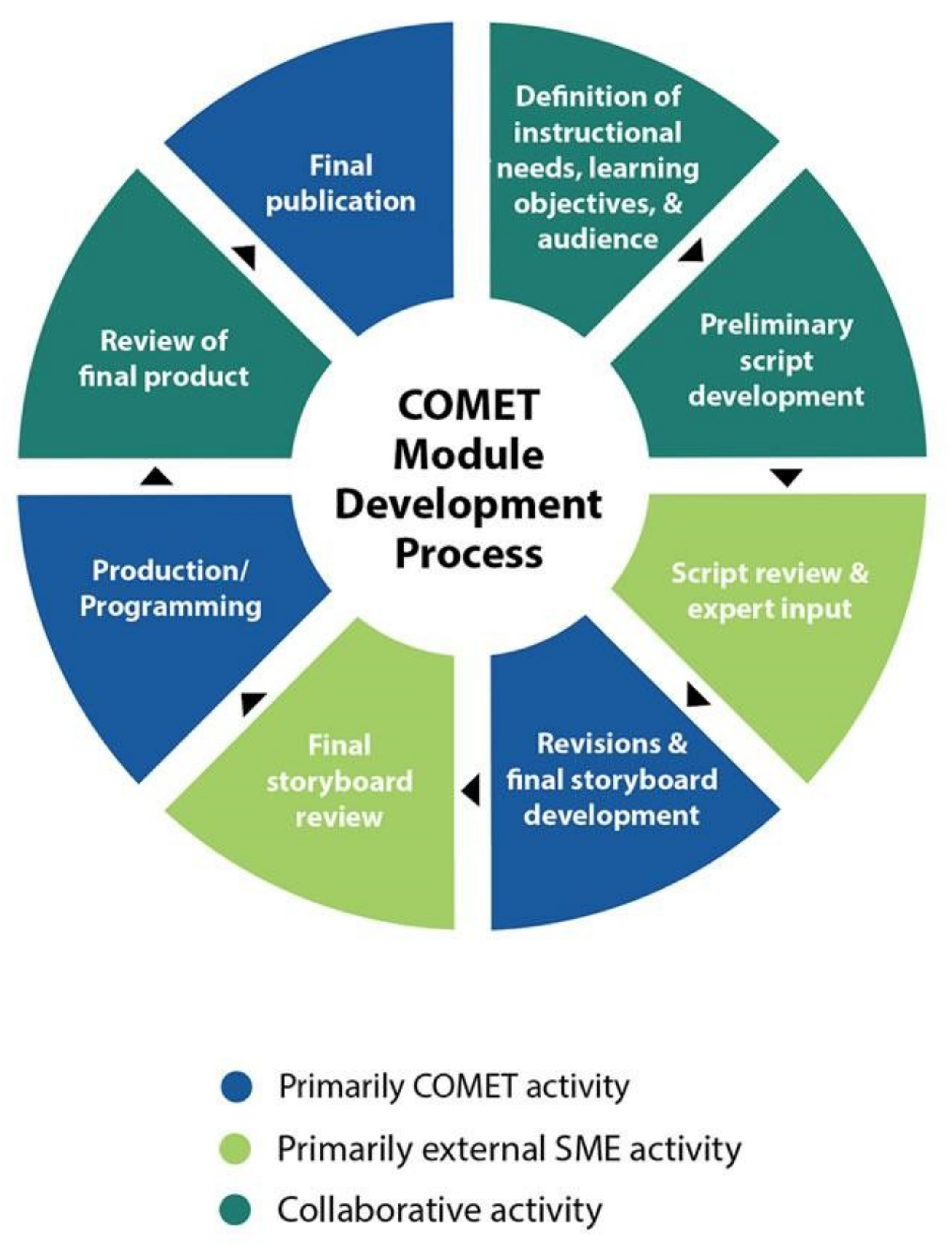
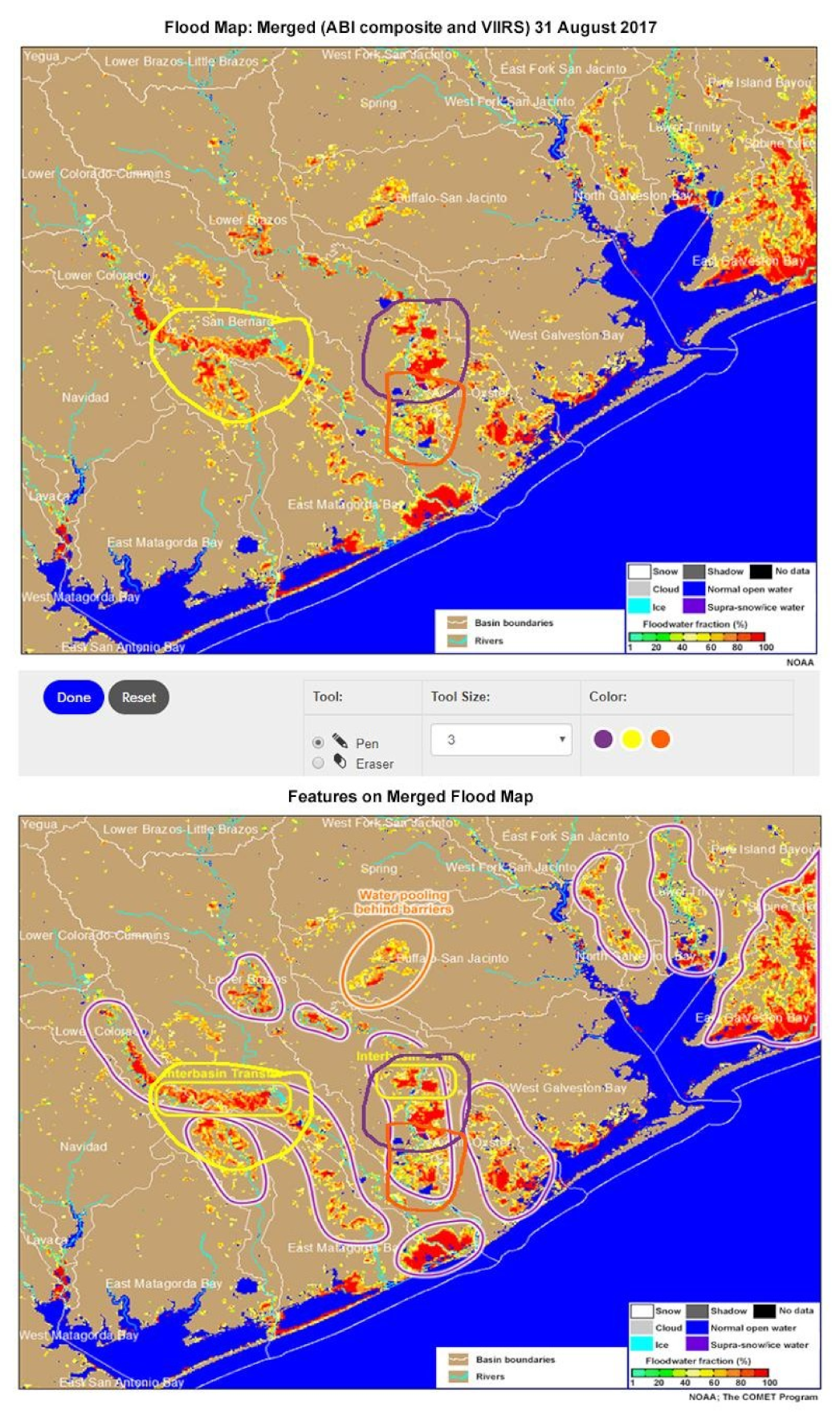
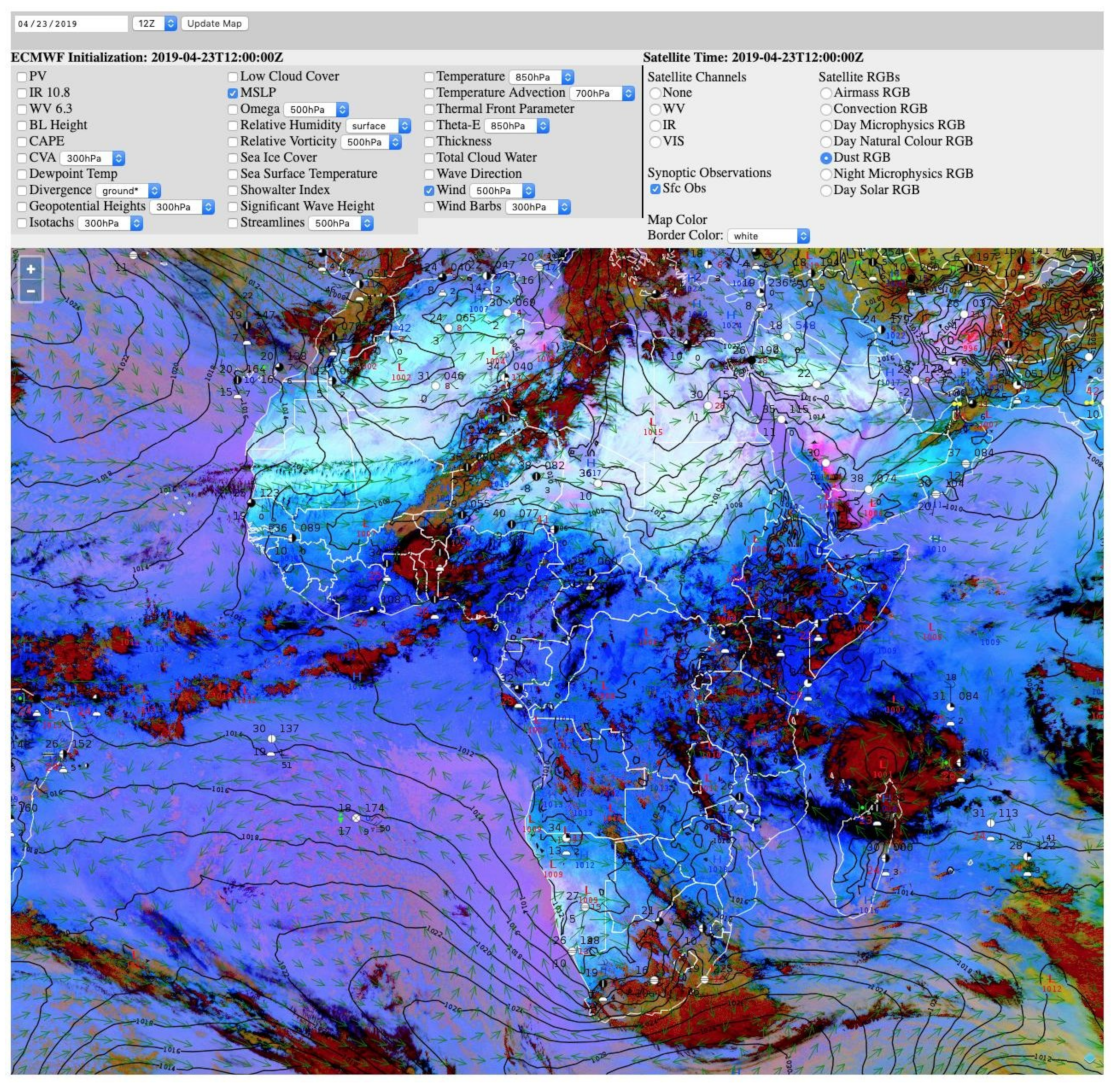
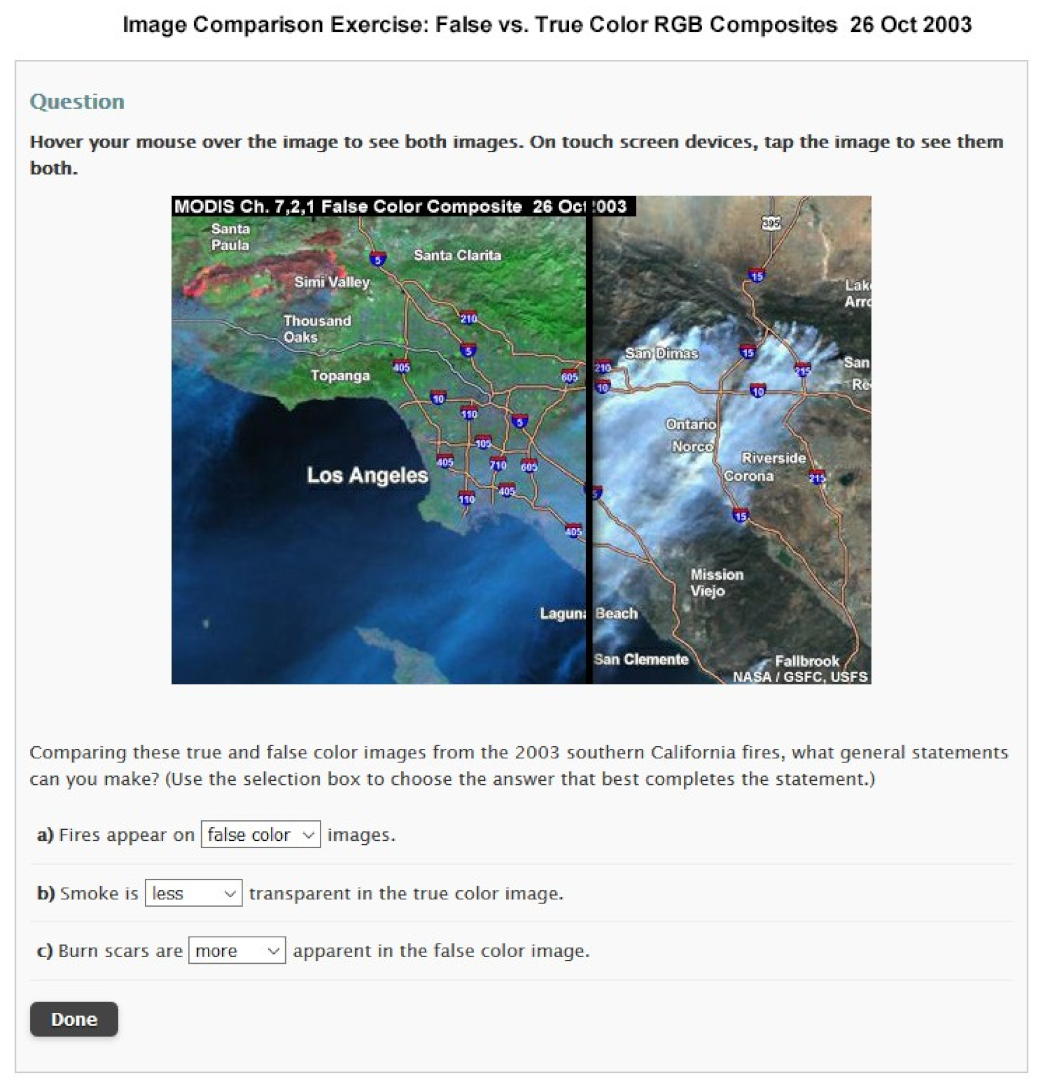
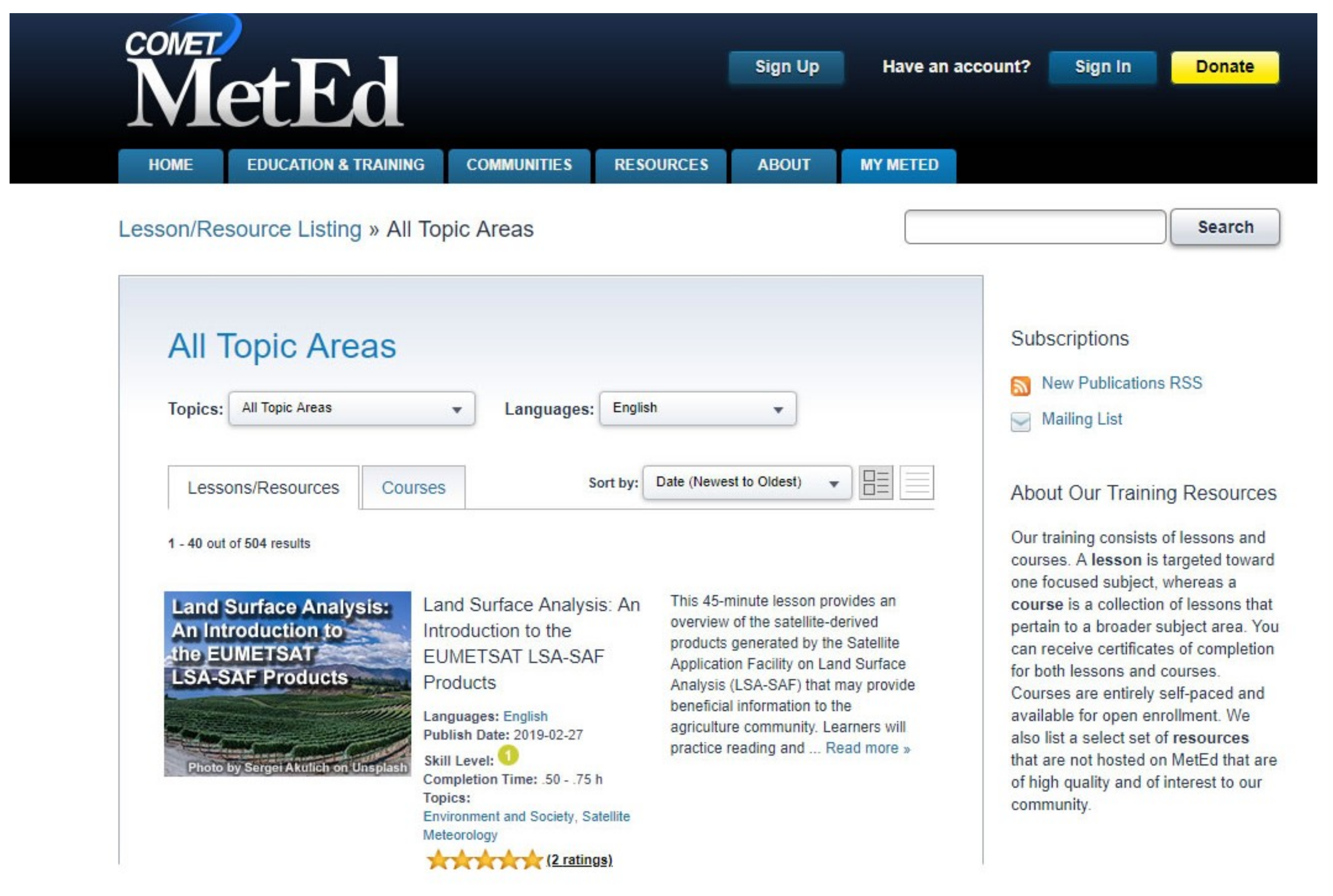
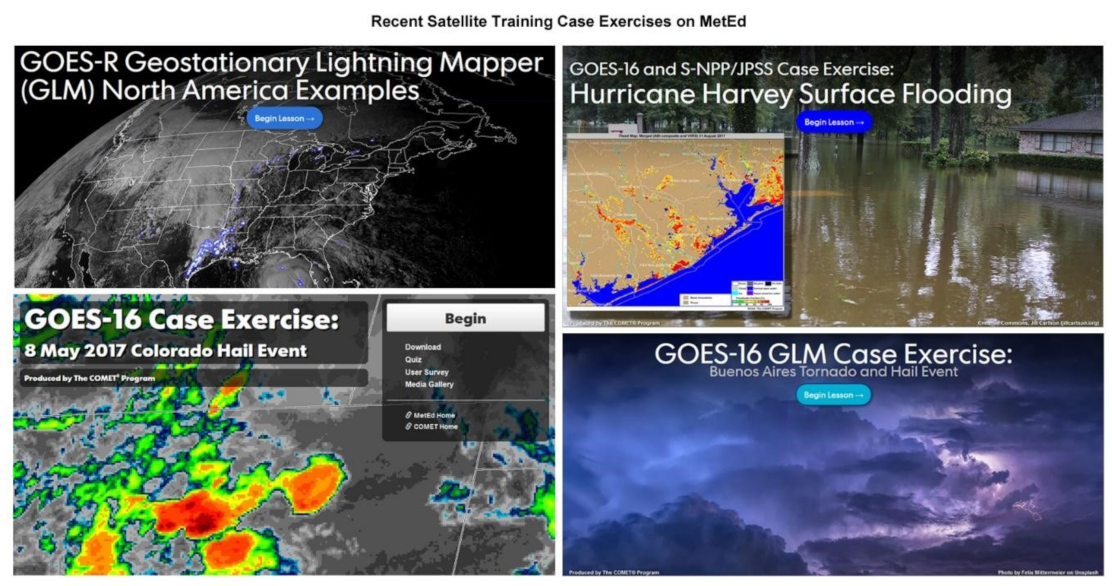
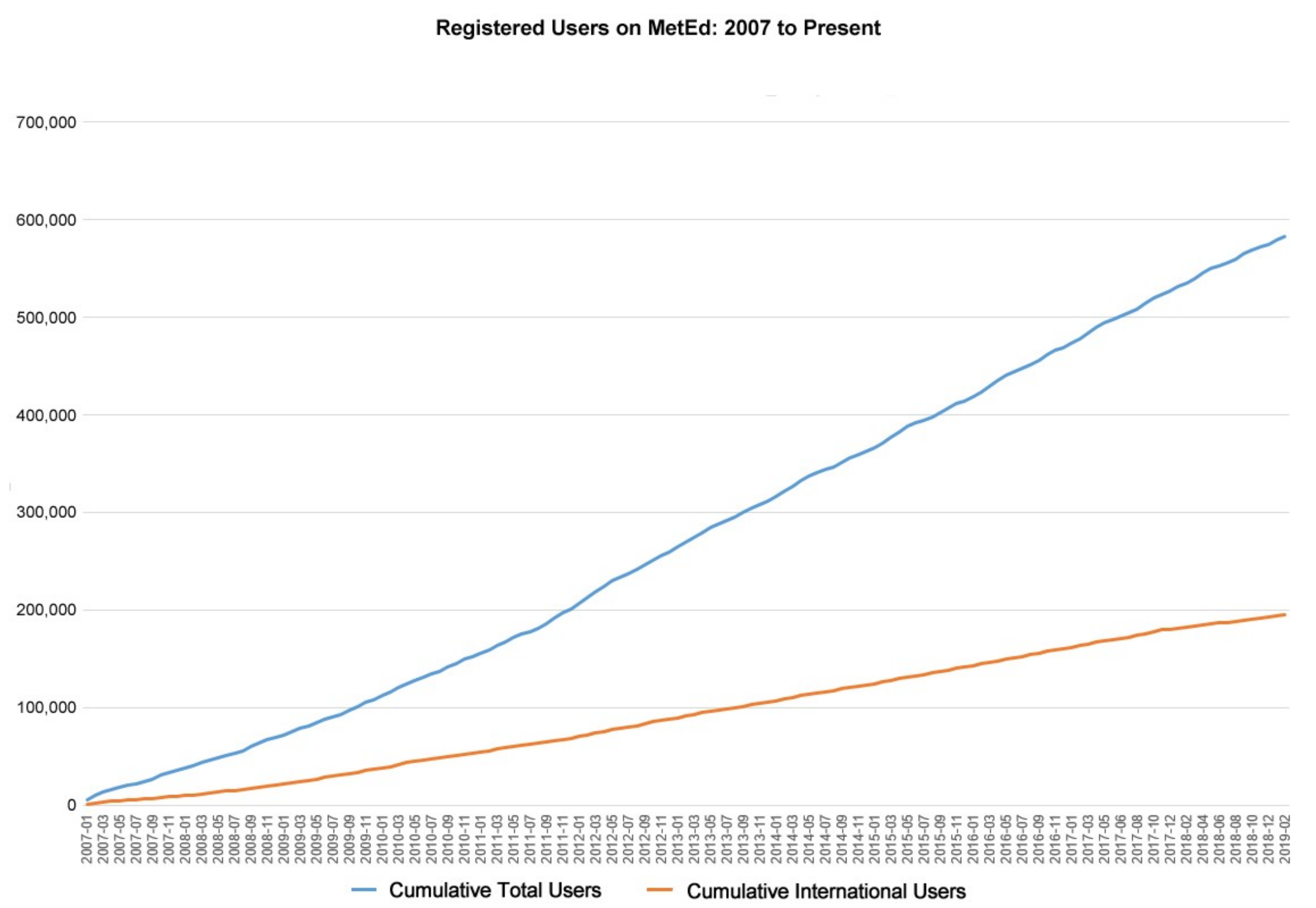
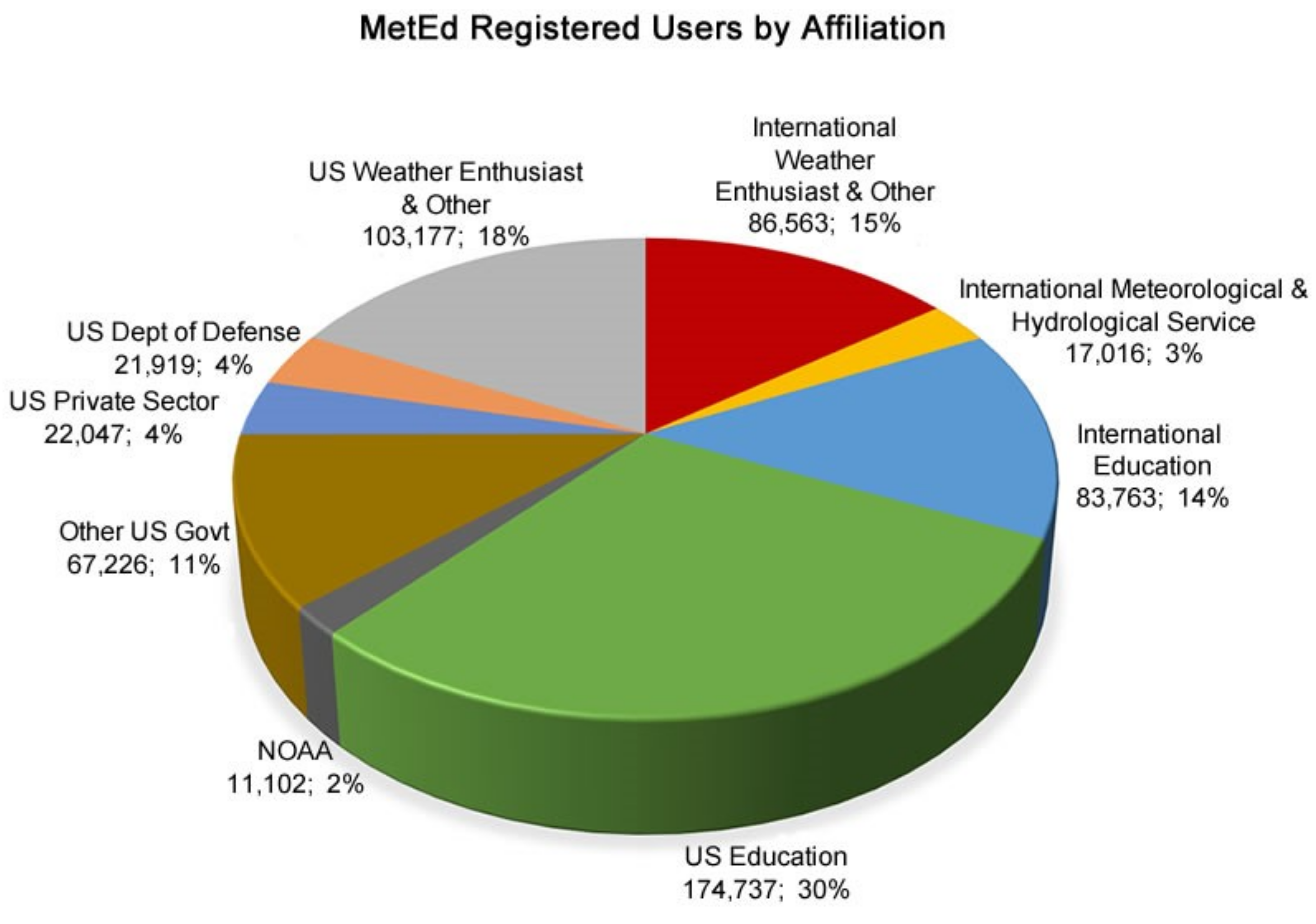
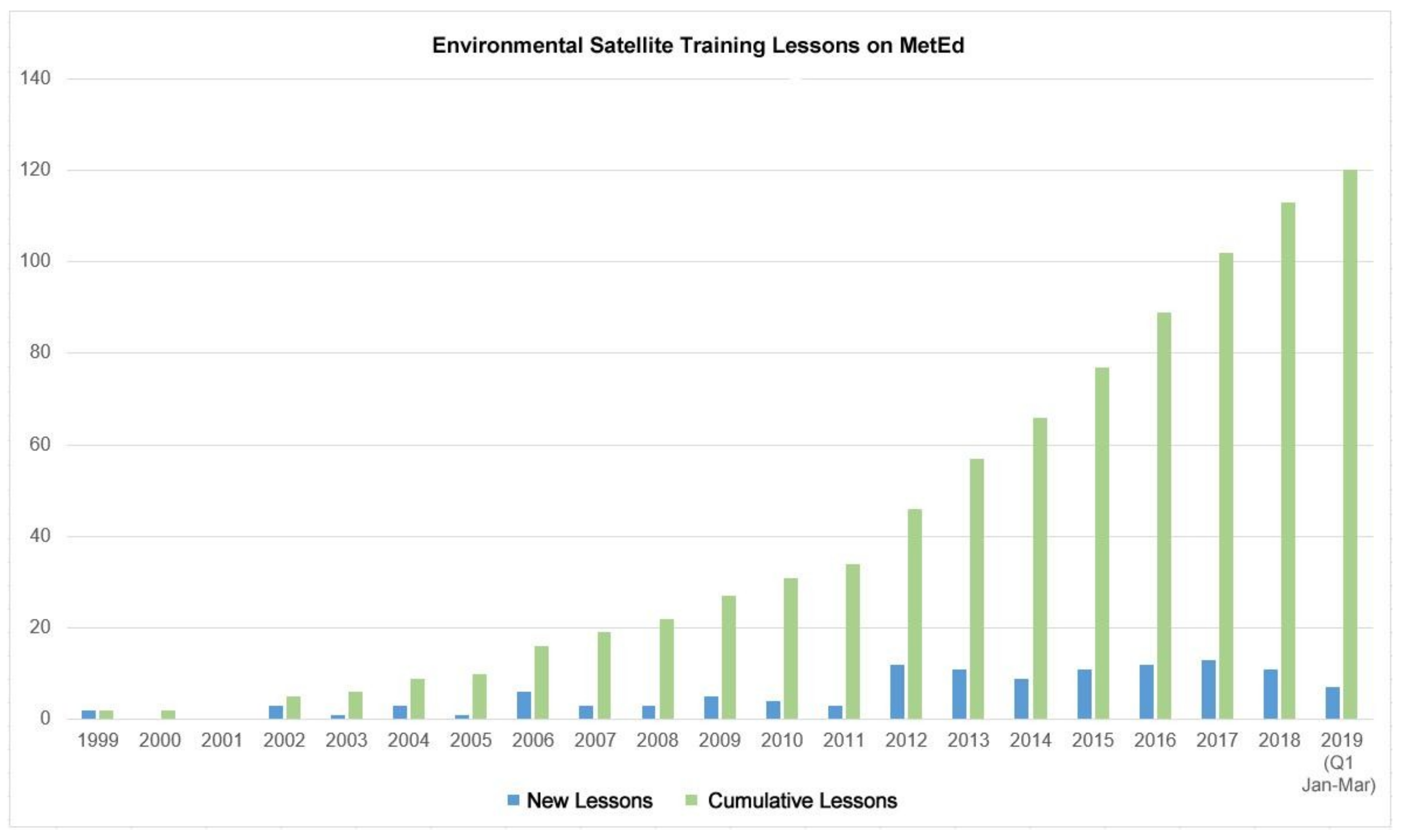
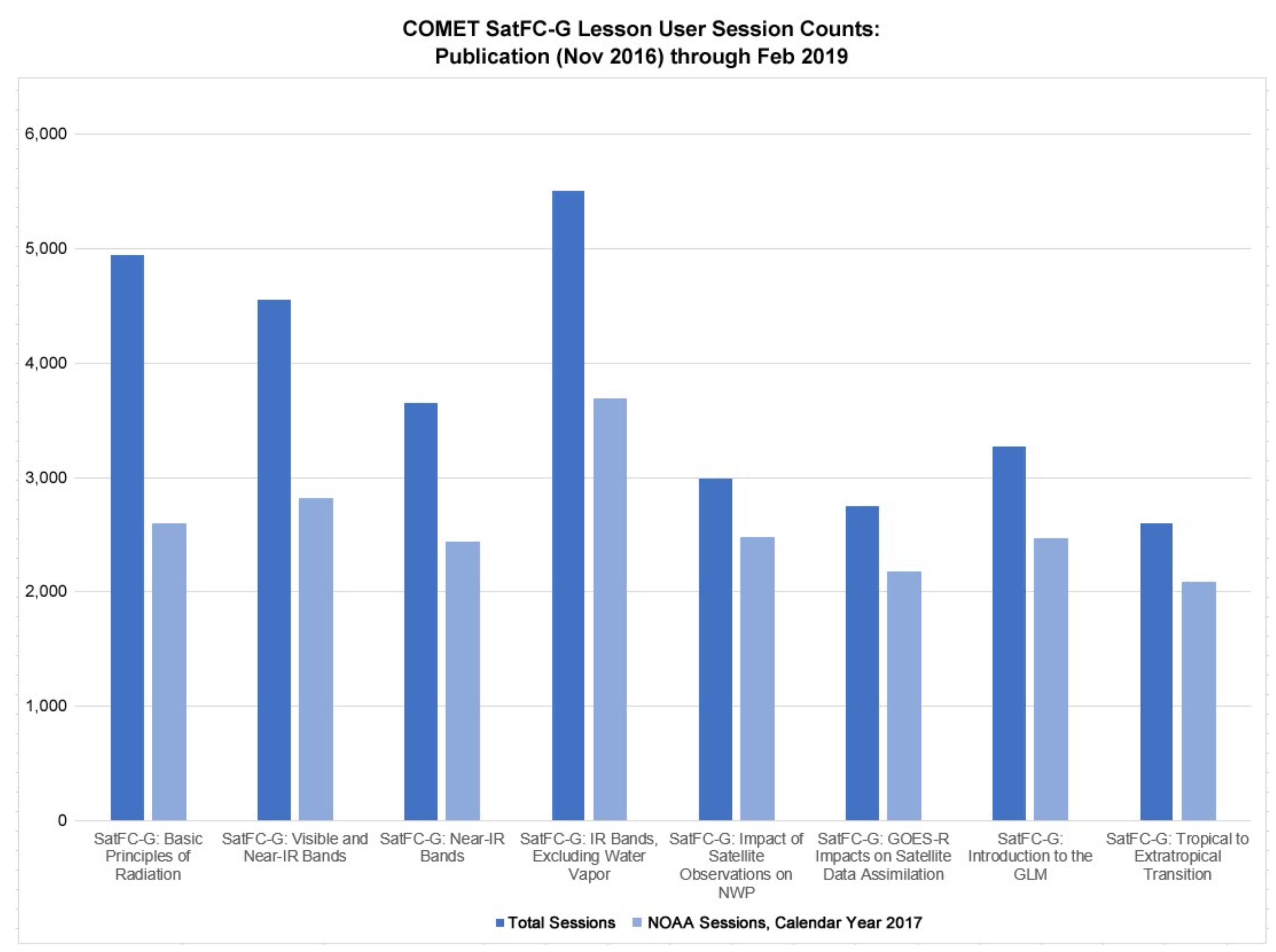
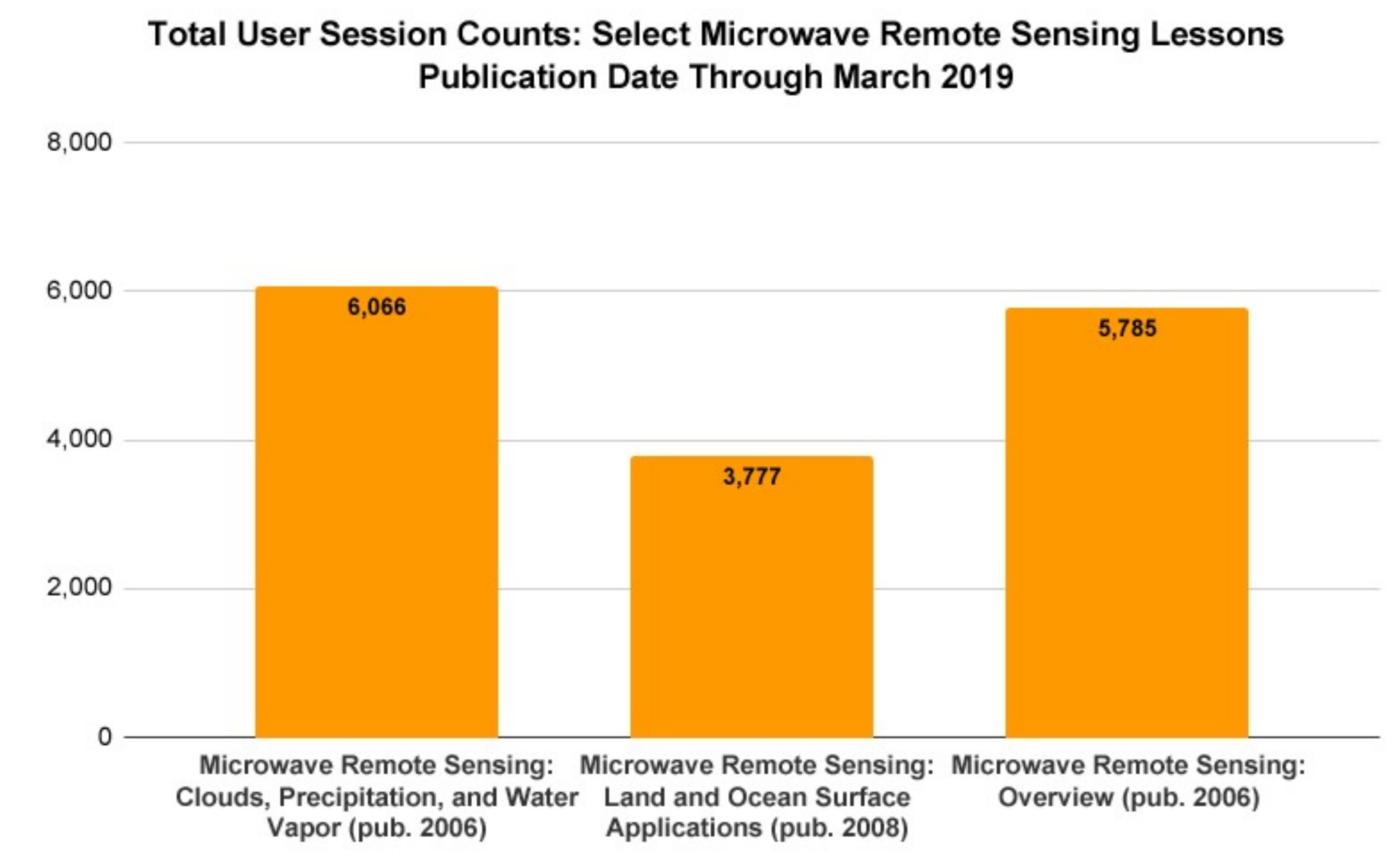
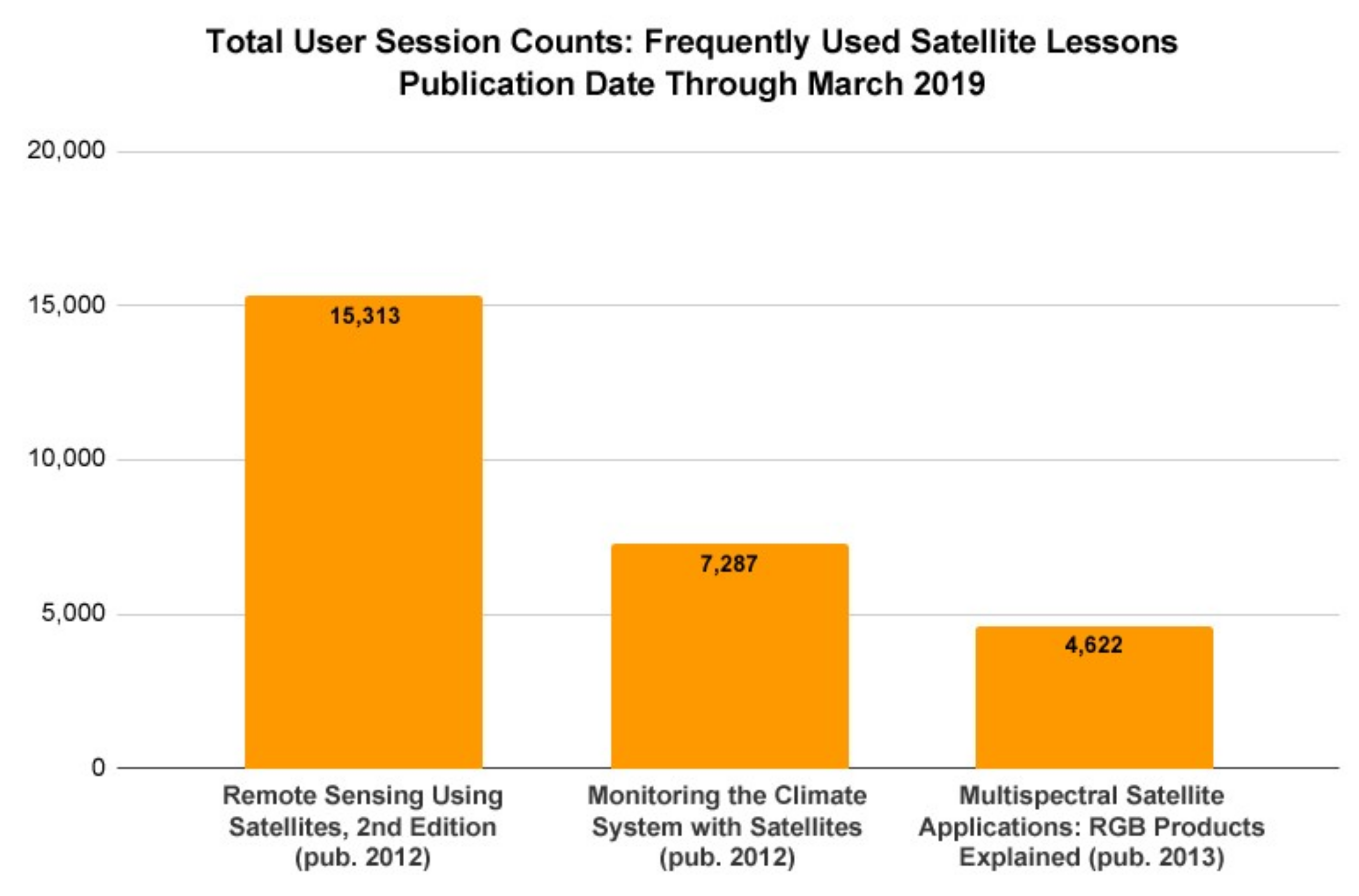
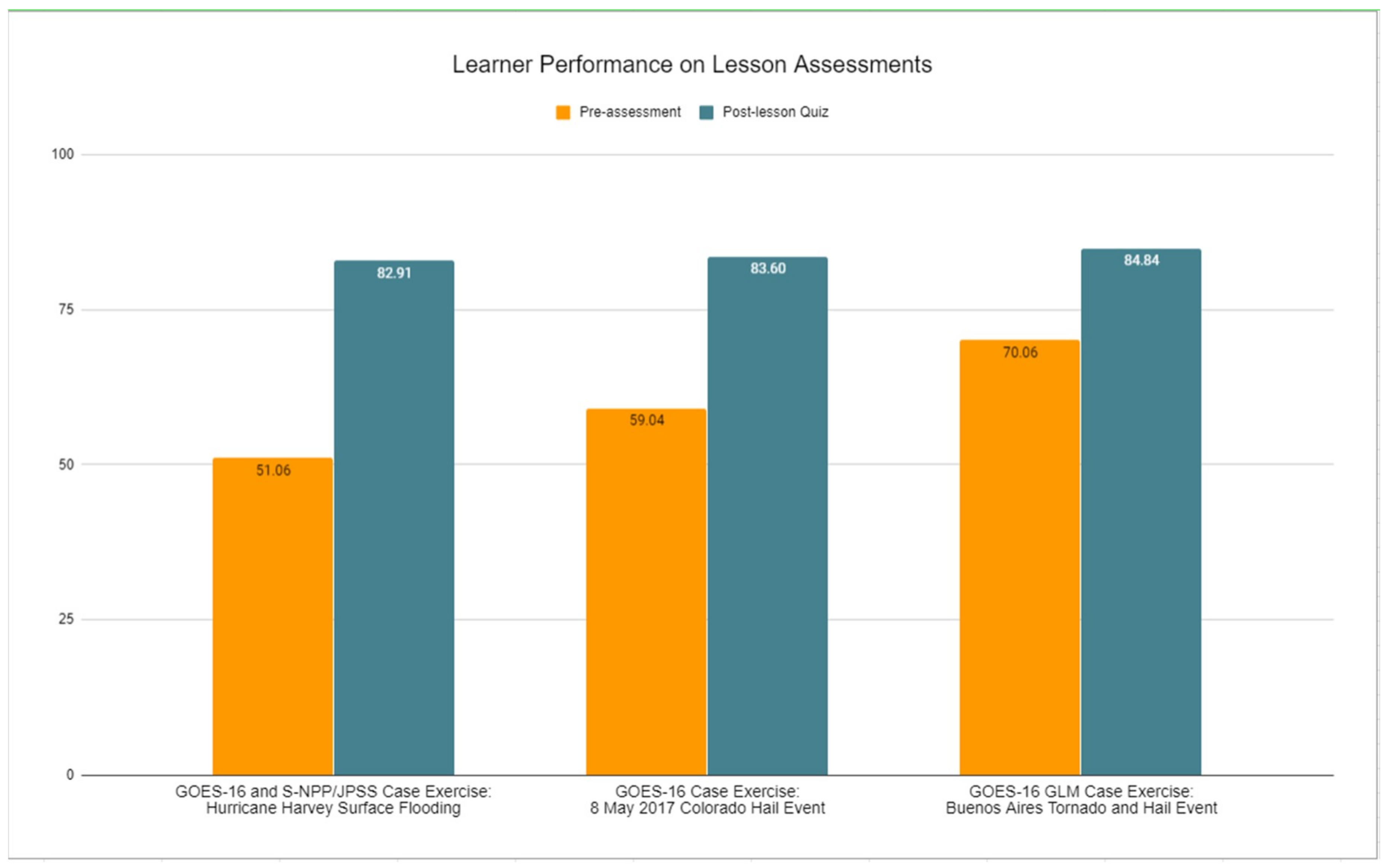
| Satellite Constellations |
|
| Remote Sensing Topics |
|
| User Applications |
|
| MetEd Satellite Meteorology Courses (https://www.meted.ucar.edu/training_detail_courses.php) | |
| GOES-R Satellites Orientation Course (https://www.meted.ucar.edu/training_course.php?id=42) | Introduction to capabilities, products and applications with the new generation GOES-R+ satellites |
| GOES-R Series Faculty Virtual Course (https://www.meted.ucar.edu/training_course.php?id=60) | Introduction to GOES-R satellite series instruments, capabilities and applications for university faculty |
| JPSS Satellites: Capabilities and Applications Course (https://www.meted.ucar.edu/training_course.php?id=54) | New generation operational polar-orbiting satellites, instruments, science, products and benefits for monitoring and forecasting various meteorological phenomena and environmental hazards |
| Microwave Remote Sensing Topics Distance Learning Course (https://www.meted.ucar.edu/training_course.php?id=15) | Foundational topics covering science, products, and applications of satellite microwave remote sensing |
| Multispectral Satellite Application Topics Course (https://www.meted.ucar.edu/training_course.php?id=35) | Foundational topics covering products and applications from multispectral observations, including methodologies used to derive multispectral image products |
| Satellite Water Vapor Interpretation - Short Course (https://www.meted.ucar.edu/training_course.php?id=44) | Introduction to interpreting water vapor imagery for analyzing and identifying atmospheric processes |
| Dynamic Feature Identification: The Satellite Palette (https://www.meted.ucar.edu/training_module.php?id=187) | Lesson series addressing use of satellite imagery to identify various atmospheric dynamic features |
| Frontal Diagnosis Course (https://www.meted.ucar.edu/training_course.php?id=68) | Identifying and analyzing cold fronts using satellite imagery |
| Modifying NWP Output Course (https://www.meted.ucar.edu/training_course.php?id=67) | Assessing NWP output using satellite imagery |
| COMET Contributions to Multi-Partner Courses | |
| Satellite Foundational Course for GOES-R: SatFC-G (https://www.meted.ucar.edu/training_module.php?id=1301) | Series of short lessons and guides addressing GOES-R geostationary satellite instruments, capabilities, essential science and products for NWS forecasters and decision makers |
| Satellite Foundational Course for JPSS: SatFC-J (https://www.meted.ucar.edu/training_module.php?id=1614) | Series of short lessons and guides addressing JPSS and other polar-orbiting satellite instruments, capabilities, essential science and products for NWS forecasters and decision makers |
| African Satellite Meteorology: ASMET | Series of lessons focused on the needs of African forecasters. Includes both online lessons as well as in-person training by different African training centers |
© 2019 by the authors. Licensee MDPI, Basel, Switzerland. This article is an open access article distributed under the terms and conditions of the Creative Commons Attribution (CC BY) license (http://creativecommons.org/licenses/by/4.0/).
Share and Cite
Dills, P.; Stevermer, A.; Mancus, T.; Guarente, B.; Alberta, T.; Page, E. COMET’s Education and Training for the Worldwide Meteorological Satellite User Community: Meeting Evolving Needs with Innovative Instruction. ISPRS Int. J. Geo-Inf. 2019, 8, 311. https://doi.org/10.3390/ijgi8070311
Dills P, Stevermer A, Mancus T, Guarente B, Alberta T, Page E. COMET’s Education and Training for the Worldwide Meteorological Satellite User Community: Meeting Evolving Needs with Innovative Instruction. ISPRS International Journal of Geo-Information. 2019; 8(7):311. https://doi.org/10.3390/ijgi8070311
Chicago/Turabian StyleDills, Patrick, Amy Stevermer, Tony Mancus, Bryan Guarente, Tim Alberta, and Elizabeth Page. 2019. "COMET’s Education and Training for the Worldwide Meteorological Satellite User Community: Meeting Evolving Needs with Innovative Instruction" ISPRS International Journal of Geo-Information 8, no. 7: 311. https://doi.org/10.3390/ijgi8070311
APA StyleDills, P., Stevermer, A., Mancus, T., Guarente, B., Alberta, T., & Page, E. (2019). COMET’s Education and Training for the Worldwide Meteorological Satellite User Community: Meeting Evolving Needs with Innovative Instruction. ISPRS International Journal of Geo-Information, 8(7), 311. https://doi.org/10.3390/ijgi8070311





